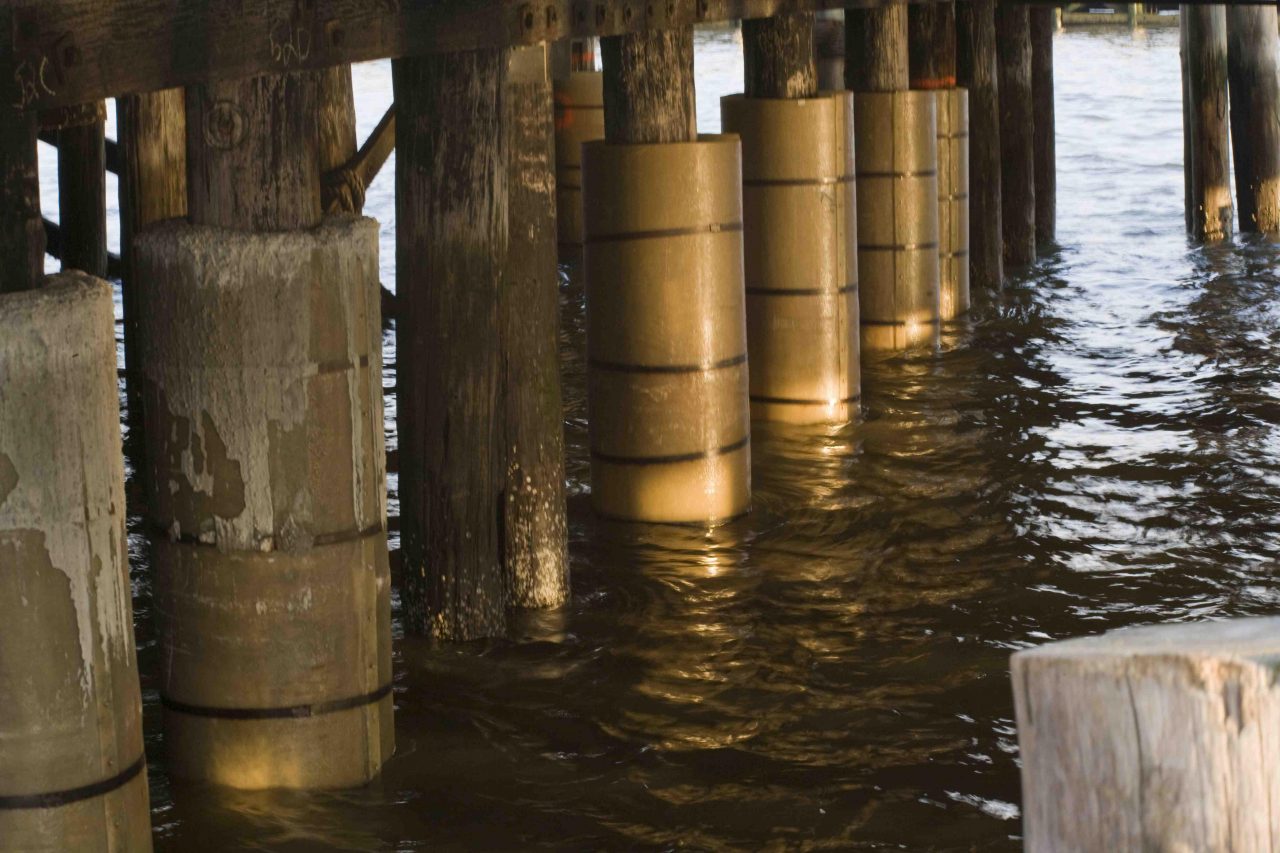Applications
Retrofitting of marine structures
Retrofitting of marine structures
CTech-LLC® systems can be used to increase the structural performance of marine structures. The greatest problem with using steel in an offshore structure is the poor corrosion resistance against seawater and other highly corrosive agents, such as hydrogen chloride. It is estimated that the oil industry spends several billion dollars each year in maintaining, repairing and replacing corroded steel structures. Composites offer the potential to reduce these costs because of their outstanding corrosion resistance against most types of chemicals. It is estimated that composites provide a weight saving of 30 to 50%. Compared to steel for many nonstructural components The most common types of composites used are GFRP and phenolic composites, with the latter being used because of good fire resistance. Advanced composites containing carbon fiber, kelvar fibers, or epoxy resins are used sparingly because of their high cost.
The first marine application of fiber reinforced polymer (FRP) composite material was in the construction of boats shortly after World War II. Boat builders began to use FRP composites instead of timber. Which was traditionally used in small maritime craft, because wood was becoming increasingly scarce and expensive, timber was as losing favour with many boat builders and owners because wooden boats were easily degraded by seawater and marine organisms and therefore required ongoing maintenance and repairs that can be expensive. The earliest attempts to fabricate boat hull with FRP composites was in 1947 when twelve small surf boats were made for the united states navy. Most maritime craft are built using glass reinforced polyester (GFRP) composites; although sandwiched composites and advanced FRP materials containing carbon are aramid fibers with vinyl ester or epoxy resin matrices they are commonly used for high performance structural applications. The application of FRP composites to maritime crafts was initially driven by a need for lightweight, strong, corrosion resistant durable naval boats. Most of these early applications were driven by the need to overcome corrosion problems experienced with steel or aluminum alloys or environmental degradation suffered by wood. Another reason for using composite was to reduce weight, particularly the topside weight of ships. The high acoustic transparency of composites also resulted in their use in rodomes on ships and sonar domes on submarines. The diverse application of composite material to naval vessel is matched by their wide ranging use in leisure, sporting, commercial and small submersibles. Composites were first used in leisure craft, and yachts in 1950’s and commercial crafts such as fishing trawlers and pilot boats as well as submersibles. The composite material most commonly used in leisure and commercial craft is GFRP in the form of a thick laminate or a sandwich composite. Over 95% of all composite marine craft are built with GFRP because of low cost. There is however a number of other reasons for the popularity of GFRP composite in marine craft, and these include
- Ability to easily and inexpensively mould GFRP to the near net shape, even for marine structure with complex shape, such as boat hulls thus making it suitable for mass production.
- Excellent corrosion resistance
- Light weight, resulting in reduced fuel consumption.
- Simple to repair
- Ability to absorb noise and dampen vibrations, which makes for a more comfortable ride on motor powered boats
Advanced fabrication processes, such as resin transfer, resin film intrusion, or auto craving are used in the construction of hull and decks toss produce composites that are defect free, excellent dimensional balance and high fiber content for maximum stiffness, strength and fatigue resistance.


